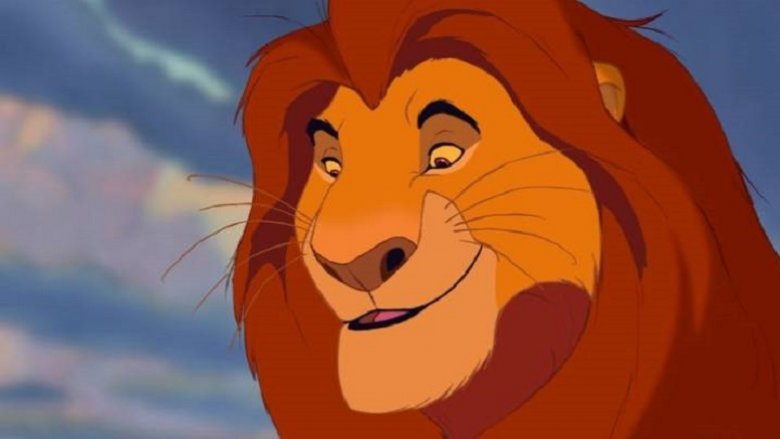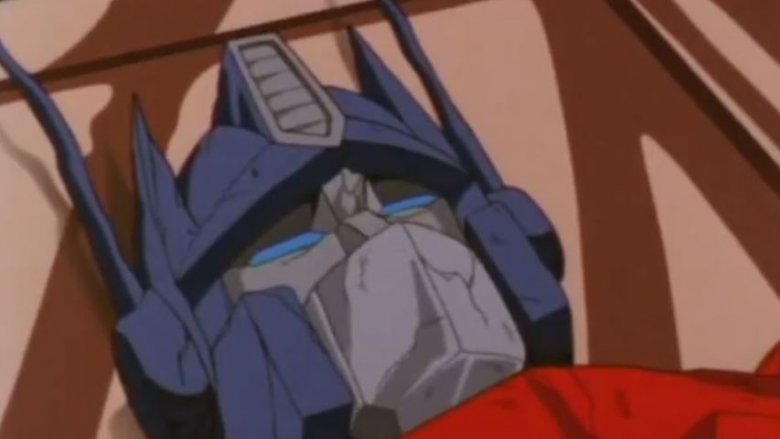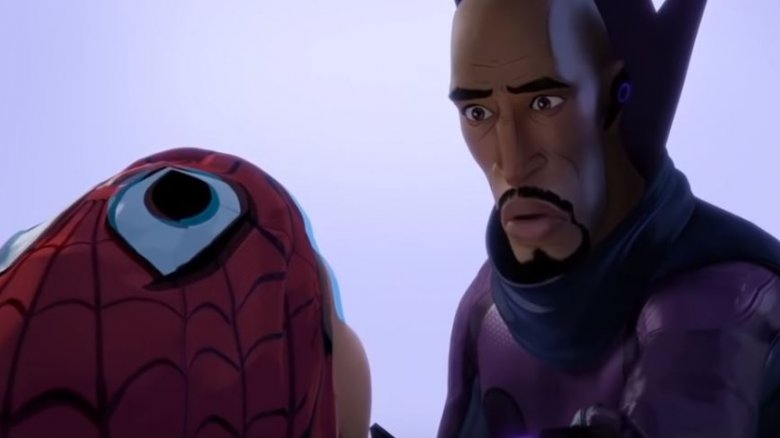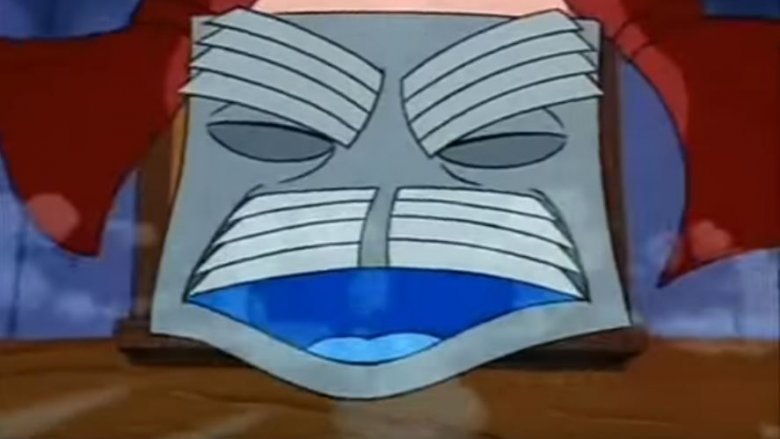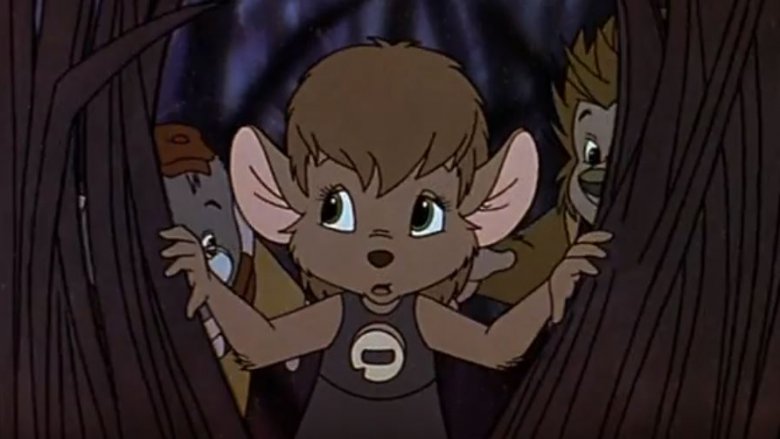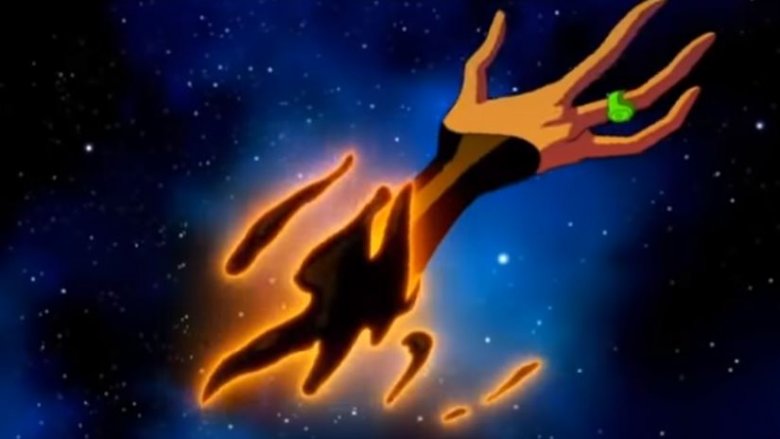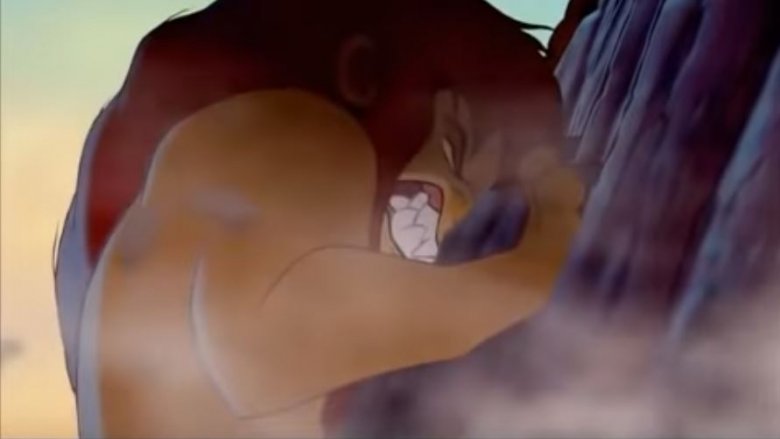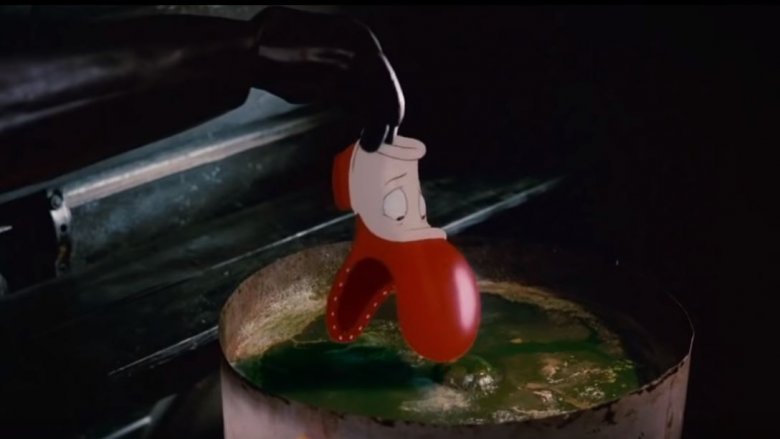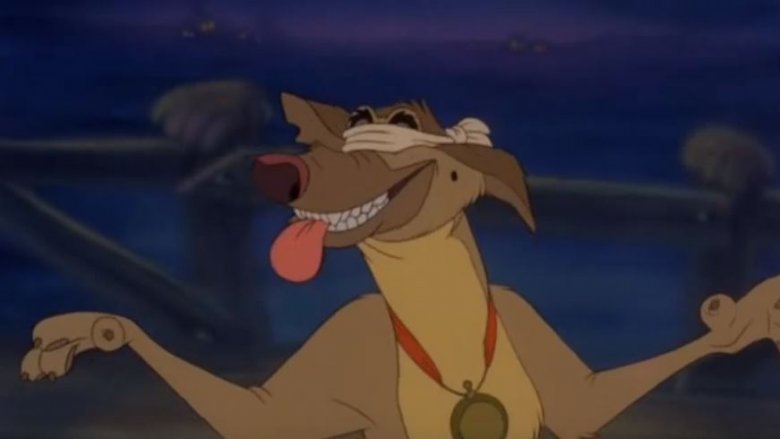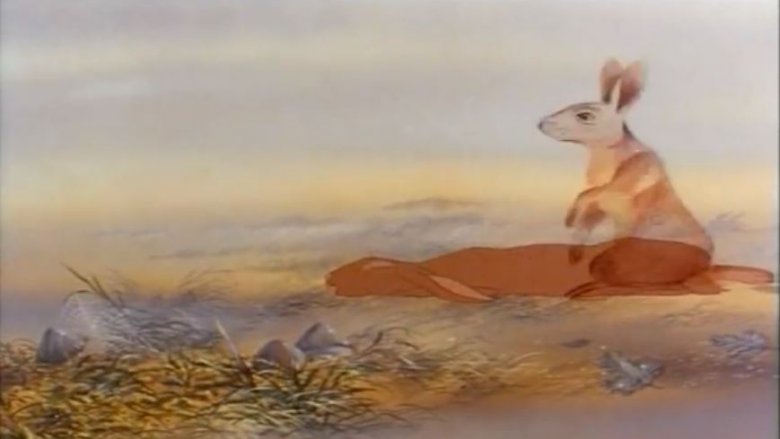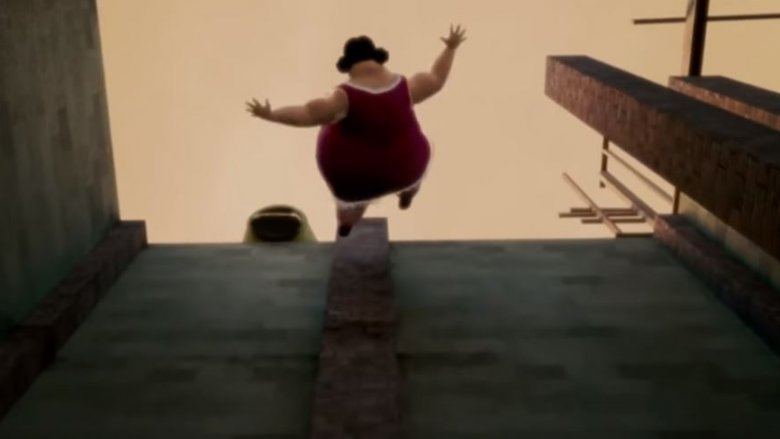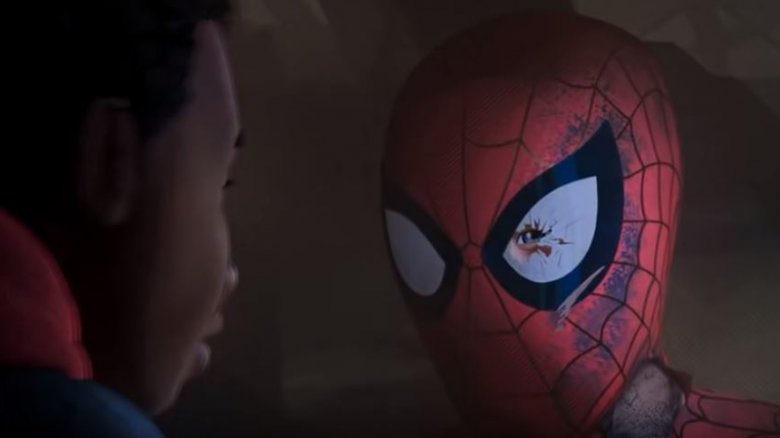Animated Movie Characters That Sadly Died On Screen
It's always a sad day when your favorite movie character dies before your eyes. Sure, future sequels might have a flashback or two, and sometimes you'll even get a whole prequel trilogy, but cinematic deaths can often feel almost as traumatic as real ones.
It's particularly crazy, though, when an animated character — especially if they are featured in a movie made for kids — dies right before your eyes. These are serious deaths, too. That means no cutaways, no iffy implications, no "the body was never found," or any of that nonsense: just a beloved figure going from alive to dead in mere moments, as movie theaters across the world flood with the tears of horrified children everywhere. It's heavy stuff, and the following death scenes are just a few of the instances that hit everybody the hardest. Hug your favorite Spider-Man doll now, guys, because it only gets rougher from here on out.
Optimus Prime goes dark
When a fan-favorite character gets killed, it's sad. Doubly so when it happens unexpectedly. Triply so when it happens at the beginning of the darn movie. Maybe that's why the death of Optimus Prime, noble leader of the Autobots and childhood hero, shook an entire generation to their core.
Optimus Prime met his maker on August 8th, 1986, according to Gizmodo, the day that the animated Transformers: The Movie was first released. If you ever want to see just how clunky and wrongheaded those Michael Bay movies really were, the true emotions apparent in this scene — eighties' cheese aside — are enough to bring tears to the eyes of even the most hardened passerby. As you probably know today, Optimus sacrificed himself to defeat his vicious archenemy, Megatron, leading to an unforgettable scene wherein he passes down the Matrix of Leadership to a young, naive Autobot named Hot Rod, who must then spend the rest of the film coming of age, redefining himself, and becoming a leader Optimus would be proud of.
What Transformers: The Movie understood, that Bay and co. totally missed when they tried to replicate this moment years later, was that Optimus's death mattered. As every kid in the audience watched him die, and saw his fellow Autobots struggle to save the day without him, they all learned that sometimes, heroes don't make it ... but that doesn't mean others can't step up in their absence.
A new Spidey suffers his Uncle Ben moment
Throughout the entirety of Spider-Man: Into the Spider-Verse, the character of Miles Morales is easy to connect with. Just like Peter Parker before him, Miles gets bit by a genetically-altered spider, and is called upon to help others. Unlike Peter, though, Miles is thrown way in over his head from day one, launched into an inter-dimensional conflict, and surrounded by Spider-people who have all been born from tragedy. Miles, luckily, hasn't faced quite such a personally damaging situation in his life: His parents are alive, he's in a good school, and while his hardships are real, they're not extraordinary in nature.
Unfortunately, that forever changes when he discovers that his beloved Uncle Aaron is the Prowler, a high-tech assassin who works for the Kingpin. To make matters worse, the Prowler is assigned the duty of taking this new Spider-Man down. This results in a stunning showdown, wherein Prowler — just inches away from slaughtering his opponent — takes the new Spidey's mask off, and discovers his nephew's face beneath it. Just as the Prowler makes the decision to let Miles go, he's shot dead by the Kingpin.
Tragic as this moment is, it also spurs Miles into action. Put simply, it's his Uncle Ben moment. Remembering the love of Uncle Aaron, reconnecting with his parents, and mastering his abilities, Miles finally evolves into the perfect Spider-Man for a new generation ... but it took this painful death scene to get him there.
The air conditioner explodes
Kids often get scared of silly things. A 1987 animated flick called The Brave Little Toaster, though, is the sort of nightmare fuel that will keep you up for years to come. Seriously, as if the hallucination scene wherein a devilish clown tries to kill the title character with forks isn't bad enough — keep in mind, this is a cartoon toaster — the film hits its depressing peak when a Jack Nicholson-sounding AC window unit appears. No, it's not the real Jack, but yes, it's a good imitation.
Now, in a normal film, you wouldn't expect much sadness to emanate from an air conditioner, even a talking one. Unfortunately, as College Humor points out, The Brave Little Toaster is no normal film, which is why the air conditioner proceeds to lecture his fellow cartoon appliances about why they're idiots for thinking that humans care about them. His temper flares, he begins shouting, his rant becomes increasingly extreme ... and suddenly, he explodes himself. This is a real death scene, not a Wile E. Coyote type stunt, and the deceased AC unit continues to haunt the back of the screen while his fellow appliances simply shrug, move on, and pretend the dude's mechanical corpse isn't hanging out of the window. Scary stuff, on multiple levels. Whether the appliances care or not, though, viewers spend the rest of the movie wondering what drove the poor AC unit insane, or why its voice sounded like Jack Torrance wielding an ax.
Parents gassed to death
If you were one of the kids who saw the 1993 animated film Once Upon A Forest, there's a good chance that certain moments have never left you. If not, well, just know that while this cartoon might look like Disney fluff on the outside, and the trailer shows lots of upbeat, lighthearted jokes, the actual movie is more of a PSA about how horrendously humans treat the environment, and what it does to wildlife. Oh, yeah, and the film also has some of the scariest scenes ever to appear in a G-rated movie.
Case in point? Right at the beginning, a crew of cute woodland creatures called the "furlings" are shocked to discover a new asphalt road, filled with dangerous human cars. When they return home, it turns out that some toxic gas rolled off a truck, and poisoned everything in its radius. One of the furlings, Michelle, races into the gas in a desperate effort to save her parents ... only to find their corpses, instead. This fruitless rescue attempt leaves Michelle poisoned, as well, so the central plot of the movie sees the other furlings going out in search of natural medicine that can help Michelle, before she dies the same way her parents did. It's a horrifying sequence, but hey, as TV Guide points out, at least there's some important messages running through the story.
A Green Lantern is dismembered and beheaded
If you know anything about the Green Lanterns, it's that they're some of the most insanely powerful folks in the DC Universe. Every single creature who wears one of those cosmic rings, whether they're a fleshy earthling or a weird scaly space octopus, wields the ability to create any glowing, emerald-tinted object their brain can dream of. So, needless to say, they don't die easily, except for the rare occasions where they give a ring to some crazy Earthling who goes all "Parallax" and kills everybody. That's a story for another day.
Anyway, one of the most grisly DC deaths of all time occurs, unsuspectingly enough, in the animated film Green Lantern: Emerald Knights. The Lantern in question is a previously unknown character who goes by the name Ardakian Trawl, and she is just minding her business when a crew of so-called "Shadow Demons" erupt from the nearby sun, break through her ring's defenses ... and, uh, tear off her limbs. No, literally. Her entire body is ripped to smithereens, terminating in her screaming head. It's pretty horrifying to watch, quickly asserts that those Shadow Demons are not to be messed with, and could definitely fit right in with some the darker sequences that filled the early days of the DCEU.
Mufasa's death still reverberates
Yeah, okay, this one is obvious. What nineties kid doesn't tear up a bit when they remember this moment? To make matters worse, everybody just had to watch the beloved lion papa die a second time in the 2019 remake ... which, for the record, was animated, not live action, despite what Disney marketing might tell you. C'mon, think about it.
Trivial disputes aside, if you've somehow forgot how tough this scene really is, here's a reminder: just as Simba is about to get trampled in a massive stampede, his courageous dad Mufasa rescues him in his jaws, races the poor cub to safety, and then — thanks to his traitorous brother — ends up perishing for these efforts. This turn of events is traumatic enough, but it only gets worse when the film shows Simba coming upon his father's dead body. The cub tries to wake Mufasa, can't, and proceeds to snuggle up under his corpse, clearly hoping that somehow, the lion will come back. The emotions in this scene still hit just as heavily as they did the first time, and it will probably forever be a touchstone moment for all Millennials, everywhere.
Never forget that poor cartoon shoe, pointlessly slaughtered in Who Framed Roger Rabbit
Sure, the 1988 movie Who Framed Roger Rabbit is live action, but practically every scene in the film is dripping with cartoon characters, cartoon tributes, and/or cartoon references. Unfortunately, one of these toons include a poor animated shoe. In any other movie, this little dude would be a happy-go-lucky side character, or a cute cameo. Here, though, he basically exists only to get brutally murdered.
The perpetrator of this horrible act is Judge Doom, played with sinister aplomb by Christopher Lloyd, who is normally one of the most likable actors out there. As pointed out by Tor, Judge Doom murders the shoe seemingly just to demonstrate how his acidic "Dip" creation is capable of killing living cartoons (which, for the purpose of the film, are normally un-killable, unlike the other ones on this list). The sadism of this act would be horrible enough, but the squirming sound effects made by the cute little shoe as it burns to death make the scene play as if Doom killing a puppy. Talk about a nasty villain!
Well, this movie must be called All Dogs Go to Heaven for a reason ...
You can only imagine the panic that struck a room full of studio executives on the day when Don Bluth (the guy who did the equally-traumatic dino flick The Land Before Time) first pitched the idea of an animated children's film where the entire plot centers around, well, a dog biting the dust. Sure, the movie shows that dogs go to heaven, and sure, the deceased dog manages to "rewind the clock" once he hits the pearly gates, and comes back to life ... but still, it's a cartoon dog getting killed! By a car, no less!
Of course, the dog in question is the wily Charlie B. Barkin, a German Shepherd and Border Collie mix, and the way he dies is a bit unusual: after a going away party involving copious alcohol consumption, Charlie is tricked onto a dock, blindfolded, and then pummeled into the water via a vehicle pushed by his canine enemies. A weird scene, but still, you can't help but feel bad for the poor dog.
Hazel lies down
If you've never yet had a chance to read, watch, or listen to Richard Adams' Watership Down — which, by the way, is a really great story, with powerful themes relating to the impact of environmental destruction — the one thing you probably know is that the 1978 cartoon version contains lots of gory battles between cute cartoon bunnies. Hey, you can't make this stuff up. The most impactful scene in the movie, though, involves a bloodless death that sticks with you for years to come.
See, throughout the entirety of Watership Down, the audience is made to empathize with Hazel-Rah, or Hazel, the courageous and intellectual bunny who trusts the sixth sense of his brother Fiver, leads the others in their fight for survival, and eventually succeeds in creating a new, more harmonious society. At the end, though, Watership Down speeds ahead into the future, as described by B-Lines and Felines, to show a gray-haired old Hazel, years after the fact, eating alone by a large gathering of other rabbits. Suddenly, Hazel hears his name being spoken in the winds, and looks up as an ethereal black rabbit, El-Ahrairah, visits him in spirit form. Hazel soon recognizes this apparition as a sort of bunny Grim Reaper, but he is not afraid. El-Ahrairah gently guides Hazel through death, into the next realm, and the brave leader lies down for the last time.
Constance Nebbercracker suffers an unbearably brutal demise
Hey, every ghost story needs a ghost. And, being that ghosts are dead people, not to mention their continued existence on Earth tends to revolve around unfinished business, you can usually count on these scary apparitions having suffered a horrible death, even if they're in a movie targeted at young viewers.
For example, take a look at Monster House, a 2006 3D animated flick that follows three preteen kids named DJ, Chowder, and Jenny as they unearth the mystery of the haunted house next door, which currently belongs to the old man Horace Nebbercracker. Eventually, the kids figure out that the spirit haunting the house is that of Constance Nebbercracker, Horace's deceased wife, whom they suspect might have been killed by her husband. When asked, though, Horace explains the truth, leading to a horrifying flashback scene wherein a living Constance — who is traumatized from earlier abuse and teasing — is shown getting freaked out when young vandals throw eggs at their house, still under construction. Constance begins swinging an ax at the kids, loses her balance, stumbles backward into the hole that's been dug for the foundation ... and accidentally yanks a not-so-well-placed lever, which causes tons of liquid concrete to descend right on top of her. The more you think about this scene, the more disturbing it gets.
The end of one Spider-Man ... and the beginning of a new one
If you were familiar with the comics when you first walked into Spider-Man: Into the Spider-Verse, you knew the introduction of Miles Morales meant serious spider-heartbreak on the horizon.
Everyone else, though, got hit in the face by the world's most painful web-shooter. It's emotional enough to watch Peter Parker's Spider-Man collapse before your eyes, smashed to death by the Kingpin. The sadness only grows as you watch the lengthy mourning sequence, wherein everybody in New York dresses in Spider-Man masks and listens to a speech by Mary Jane. To top things off, the fact this version of Spidey, voiced by Chris Pine, has a history so similar to the classic Sam Raimi/Tobey Maguire Spider-Man films from the 2000s ... well, it's powerful stuff, and almost depressing enough to distract you from the fact this Peter has weirdly blond hair, a perfect life, and everything the "real" Spider-Man you know has always lacked. Soon enough, a more familiar version of Peter, voiced by Jake Johnson, is ripped into Miles' dimension, complete with more accurate Raimi memories, the infamous "Parker luck," and messy personal issues up the wazoo. However, as pointed out by the Washington Post, the "real" Spidey's entrance doesn't take away from the power of the scene showing a peak Spider-Man dying before Miles' eyes, which is arguably one of the most affecting sequences in the film — and, arguably, in the entirety of superhero movie history. Excelsior.
